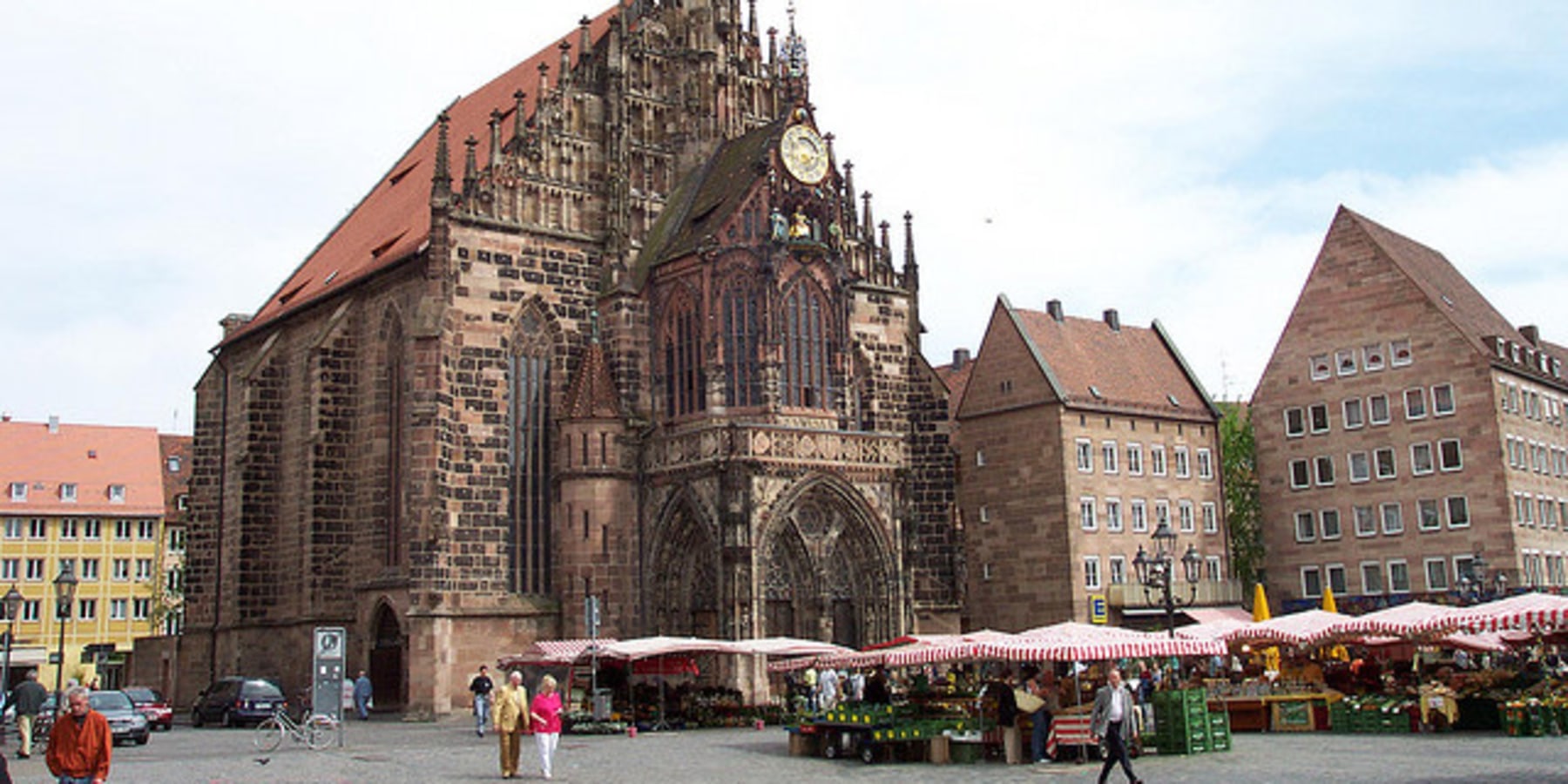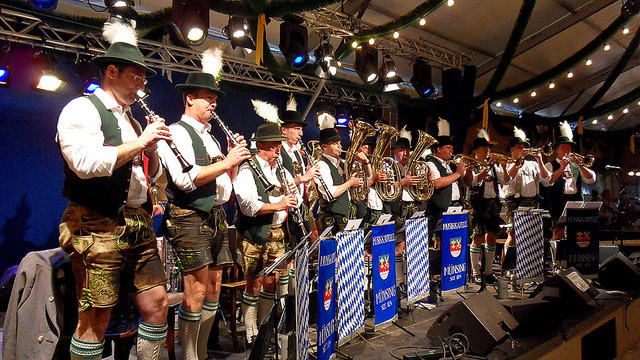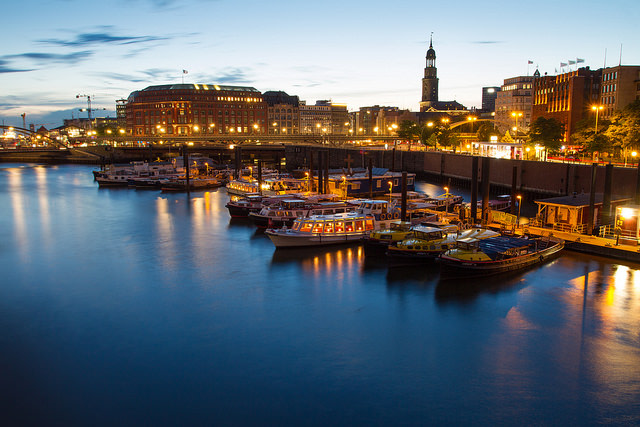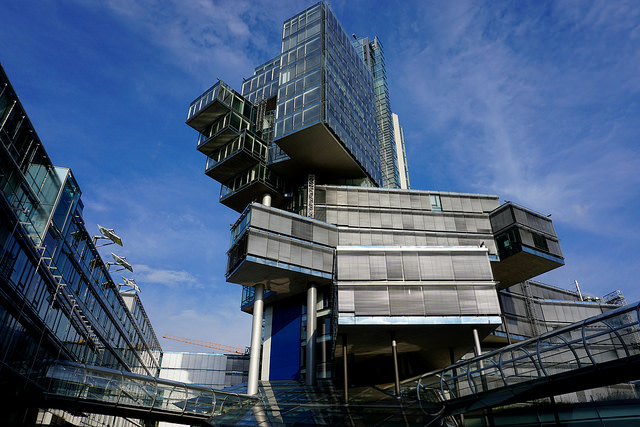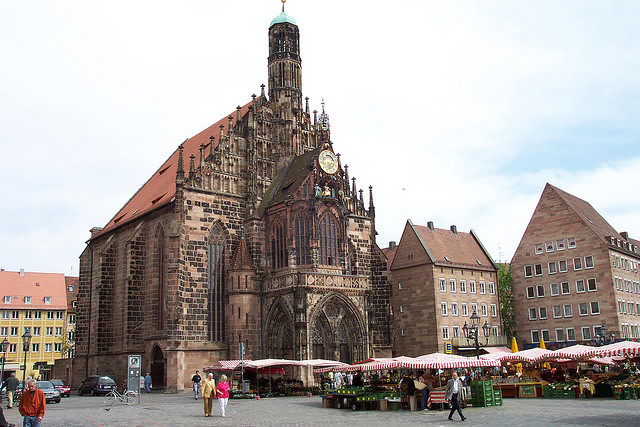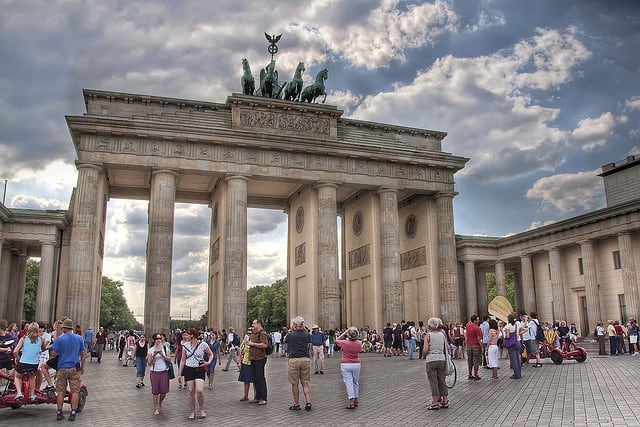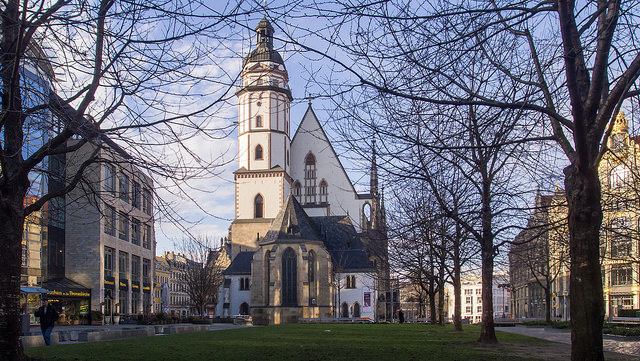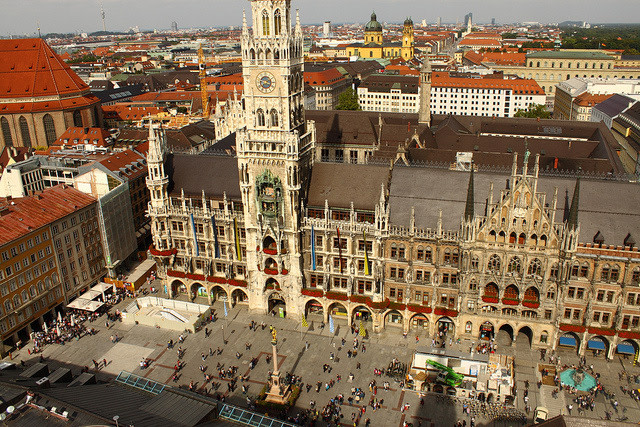| 8 mins read
By Jennifer Mullen
When planning a visit to Germany, often one only thinks of the cultural stereotypes, more likely associated with Munich and the state of Bavaria, such as Lederhosen, sausages and the Oktoberfest. Yet visitors will be pleasantly surprised at the unique and different cultures and characteristics exhibited by the main German cities.
To give it an interesting twist, let’s pretend we are driving around Germany in an imaginary tour bus (Volkswagen or BMW of course). Your imaginary German tour guide wants to show you the different faces of each of these six cities, so in every place he pulls out a different hat from his Koffer (or suitcase in English).
Hamburg
The first stop would be right at the top of the map, in Hamburg, where our tour guide would pull out his marine captain’s hat. Hamburg is Germany’s second largest city and main port, so with its location on the river Elbe close to the North and Baltic seas, its oceanic climate and maritime spirit are felt across the whole city. A “grosse Hafenrundfahrt”, or harbour tour by boat, is highly recommended to take in the skyline, crowned with its many spires. Hamburg is even said to have more than 2400 bridges crossing its labyrinth of canals and streams, which is more than Venice, Amsterdam and London put together. Hamburg is also a city of culture, which comes alive at night with its abundance of theatres, restaurants, concert halls and bars. The area of St Pauli and the Reeperbahn, is a street lined with bars, clubs, restaurants and pubs, plus it is also infamous as being the red light district. The Beatles played here in the early 60’s, before their ascent to fame, and John Lennon said: "I might have been born in Liverpool – but I grew up in Hamburg". So try some of the typical north European fish based cuisine, such as pickled herrings, and grab yourself a locally brewed Astra beer. If you can manage to stay out all night, many people head at dawn to the famous fish markets to see in a new day.
Hannover
After the slightly seedy excitement of Hamburg, the more serious city of Hannover will be a complete contrast. Hannover has the reputation of being Germany’s most innovative city; therefore our tour guide will pull out a cap bedecked with an enormous glowing light bulb. The reason behind the innovation is that Hannover is famous all over the world for hosting some of the largest global conferences or trade fairs, such as the technology industry’s flag show event, CeBIT. Hannover is also known throughout Germany as being the place where the very best standard German is spoken, known as “Hochdeutsch”, which is the equivalent of “Queen’s English”. If big business is not your forte, why not spend time meandering through some of the city’s striking open spaces and gardens, such as the Herrenhausen Gardens or wander around Burgstrasse to see Hannover’s iconic half-timbered buildings. If you are lucky enough to visit Hannover around December, simply follow your nose to the warm aroma of gingerbread or the spiced scented tang of traditional mulled wine.
Nuremberg
Nuremberg will be the city, top of the list for history enthusiasts, therefore at this stop the Nuremberg tour guide will pull out a fine medieval king’s crown. Nuremberg is a city so rich in gothic and medieval architecture; so make sure you bring your walking shoes to stroll along cobbled streets, marvelling at tall spires, timbered facades and the bustling market places. Nuremberg has over 40 museums, including the Germanic National Museum, which pays homage to this country’s rich and often dramatic history. A culture lover will also be very impressed by the opportunities to experience opera, theatre and dance performances. If all the sightseeing works up a keen appetite, treat yourself to some traditional Nuremberg finger sized bratwurst sausages. These can be eaten in threes like a burger from a bun (known as “drei im Weggla”), or from a traditional pewter plate, not forgetting to help yourself to a generous dollop of German mustard (or “Senf” as the locals call it).
Berlin
The hippest and most happening stop on our bus adventure is most certainly Berlin, which is known in Germany as the “city of cool”. This is a city synonymous with the cabaret culture of the 1920’s and 30’s, therefore the head wear for Berlin has to be the black bowler hat. Berlin’s character is somewhat contradictory. On one hand the city represented the disciplined centre of the Prussian empire, but on the other it became a magnet for artists, musicians and conscientious objectors, all resulting in an explosive arts scene. Berlin’s nightlife is one of the most colourful and vibrant in Europe, so dress up and hit the town. If all that dancing tires you out, Berlin is the centre of Germany’s film industry, so have a rest in front of the big screen. No trip to Berlin is complete without taking in some of the most iconic sites, such as the Brandenburg gate and the remaining parts of the Berlin wall. Berlin also has a thriving culinary culture, ranging from high end restaurants, to small booths selling the very tasty “Curry Wurst”. Finally, if you long for some peace and quiet after all that “coolness”, take a boat trip along the green and tranquil River Spree, which feels like a completely contrasting world, to the grandeur of the city.
Leipzig
Heading East will be a tad different; this time our tour guide will pull out a white powdered wig, typical of the seventeenth century and worn by one of the most famous composers associated with Leipzig, Johann Sebastian Bach, who lived in Leipzig for the last 27 years of his life. Classical music lovers will also be delighted to know that Wagner was born in Leipzig, and Mendelssohn established a conservatory here in 1843. The architecture of Leipzig is spectacular, so take the time to visit some of the more famous churches (St Thomas and St Nicholas), or wander through the old town, to see how older styles of buildings sit flawlessly side by side with more contemporary ones. Leipzig was also a major city of East Germany (or GDR) during the cold war years of 1949 up to the fall of the Berlin Wall in 1990. If you are interested in this period in modern history, do not miss a visit to the Zeitgeschichtliches Forum. The Saxon style of food in Leipzig is very much associated with central Europe, therefore schnitzel, dumplings and roast pork. Meeting friends and drinking coffee has also been a very popular past time since Bach’s era in Leipzig, with Zum Arabischen Coffe Baum being the oldest and best known. These cafes also have a mouth-watering array of traditional cakes and pastries.
Munich
Finally, heading south, the guide pulls out perhaps the most clichéd hat in his collection, the Bavarian trachten hat, complete with a feather on the side. If you are lucky, he may even put on his Lederhosen, in an all-out tribute to Germany’s city of culture, Munich. This is the city which oozes quality of life, with its parks and open spaces, such as the English Garden, also from the proximity to the Alps. Strolling around, you will see the way the old and contemporary architecture harmonise with each other. Marienplatz, which is said to be one of the most historic and exquisite squares in Germany, should be on the top of your list of places to visit, therefore make sure you are there at 11am to hear it sound (fortunately also midday and 5pm in summer). No trip to Munich would be complete without drinking a large glass of traditional beer and the best known is the Hofbrauhaus. If you are keen on science and technology, take a trip to Deutsches Museum, which is the largest in that field in the world. Sports fans should also try to get tickets to see Bayern Munich in action, even if it to experience the electric atmosphere in the stadium.
At the end of the trip however, the German tour guide sadly shuts his Koffer and wishes us all “Auf Wiedersehen”, which literally means, “until we see each other again”. If you do plan a return adventure, why not try on the hats of Cologne, Frankfurt, Stuttgart, Dusseldorf or Dresden this time?
(Jen Mullen is a seasoned traveler, having lived and worked in the United Kingdom, Germany, Switzerland, Australia and most recently Southern India. In her opinion, the best parts about traveling are meeting the locals, sampling as much new food as possible, and making an effort to learn new languages)

